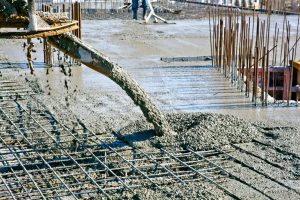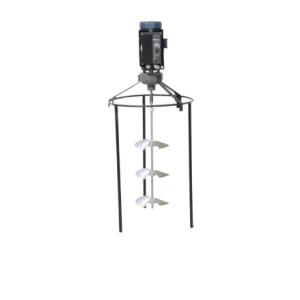 Material mixing is a critical process in construction projects, directly affecting the quality, appearance, and durability of finished work. From drywall compounds to cement-based materials, proper mixing ensures consistent application and reliable results. However, construction professionals regularly encounter mixing challenges that can impact project timelines and outcomes.
Material mixing is a critical process in construction projects, directly affecting the quality, appearance, and durability of finished work. From drywall compounds to cement-based materials, proper mixing ensures consistent application and reliable results. However, construction professionals regularly encounter mixing challenges that can impact project timelines and outcomes.
At Quikspray, we’ve spent over three decades helping contractors solve material mixing problems. In this guide, we’ll explore five common mixing issues and provide practical solutions based on real-world experience.
1. Inconsistent Material Consistency
The Problem:
One of the most frequent challenges contractors face is achieving uniform consistency throughout a batch of material. Inconsistent mixing leads to:
- Areas with different textures or finishes
- Varied drying or curing times
- Application difficulties
- Quality control issues
This problem is particularly evident when mixing drywall compounds, plasters, and cement-based materials for texture applications.
Real-World Impact:
Inconsistent mixing in drywall compounds frequently leads to visible texture variations after painting. This often requires additional sanding and reapplication, increasing both labor costs and material usage while delaying project timelines.
The Solution:
Equipment Approach: Use a Barrel Mixer™ with the appropriate blade style and RPM for your specific material. The adjustable blades on professional barrel mixers allow for thorough mixing throughout the container.
Technique Improvements:
- Begin with the proper water-to-material ratio according to manufacturer specifications
- Add powder to water (not water to powder) in gradual amounts
- Mix at lower speeds initially, then increase speed once materials are incorporated
- Allow proper mixing time – many contractors rush this step
- Scrape container sides during the mixing process to incorporate all material
2. Excessive Air Entrainment
The Problem:
Air incorporation during mixing (especially with high-speed mixers) creates:
- Bubbles and pinholes in finished surfaces
- Reduced material strength in cement-based applications
- Difficult finishing and application
- Extended drying times
Real-World Impact:
This issue commonly affects projects requiring smooth finishes, such as level 5 drywall finishing, decorative concrete work, and fine plaster applications.
The Solution:
Equipment Approach: Use variable speed mixers like our 500 Series Barrel Mixer that allow precise RPM control to reduce air entrainment.
Technique Improvements:
- Start mixing at lower speeds (100-150 RPM)
- Gradually increase speed only as needed for material incorporation
- Use the appropriate blade design – propeller-style blades typically introduce less air
- Allow mixed material to “rest” for 2-3 minutes before application
- Consider adding defoaming agents for especially problematic materials
3. Material Setting Too Quickly
The Problem:
When mixed materials begin setting before application is complete, contractors face:
- Cold joints or visible seams in finishes
- Wasted material
- Hurried application leading to quality issues
- Project delays due to batch limitations
This is particularly problematic with fast-setting compounds, cement-based materials, and epoxies.
Real-World Impact:
During summer months, stucco and other cement-based materials can begin setting within 15-20 minutes of mixing, particularly in hot weather conditions. This accelerated setting time forces contractors to work quickly and often results in wasted material that must be discarded when it becomes partially set before application.
The Solution:
Equipment Approach: Use appropriately sized mixers based on your application rate. For larger projects, consider our U-Blend Mixers that allow continuous mixing while application proceeds.
Technique Improvements:
- Mix smaller batches appropriate for your crew size and application rate
- For cement-based materials, use cold water in hot weather
- Consider approved set-retarding admixtures when appropriate
- Keep equipment and materials in shaded areas on hot days
- Organize workflow to minimize time between mixing and application
4. Inadequate Mixing of High-Viscosity Materials
The Problem:
High-viscosity materials like waterproofing compounds, epoxies, and thick mortar present unique mixing challenges:
- Unmixed pockets of material
- Inconsistent curing or performance
- Equipment strain or failure
- Difficulty achieving manufacturer-specified properties
Real-World Impact:
These problems are especially evident in specialized applications like waterproofing, where material failure can have serious consequences.
The Solution:
Equipment Approach: For high-viscosity materials, use high-torque mixers specifically designed for demanding applications, such as our 300 Series or 500 Series Barrel Mixers with appropriate horsepower (1-2 HP).
Technique Improvements:
- Use the correct blade design – helical or ribbon blades often work better for high-viscosity materials
- Begin mixing at slow speeds to create a vortex
- Follow a systematic mixing pattern, moving the mixer throughout the container
- Allow longer mixing times than with lower-viscosity materials
- Consider material temperature – many high-viscosity materials mix more effectively at specific temperature ranges
5. Dust Control During Mixing
The Problem:
Powder materials create dust during the mixing process, leading to:
- Respiratory hazards for workers
- Contamination of adjacent finished areas
- Cleanup time and costs
- Regulatory compliance issues
Real-World Impact:
This is particularly problematic in occupied renovation projects, sensitive environments, and when working with materials containing silica.
The Solution:
Equipment Approach: Use dustless mixing systems like our U-Blend Dustless Mixer that are specifically designed to contain dust during the mixing process.
Technique Improvements:
- Add powder materials slowly to liquids
- Decrease mixer speed during powder addition
- Use dust extraction systems when appropriate
- Consider pre-dampening powder materials when manufacturer guidelines allow
- Create mixing stations separated from finished areas
Choosing the Right Mixing Equipment
The right equipment significantly impacts your ability to avoid these common problems. When selecting mixing equipment, consider:
- Material type and viscosity: Different materials require different mixing approaches
- Batch size requirements: Ensure your mixer capacity matches your production needs
- Power source availability: Electric (110V or 220V) vs. pneumatic options
- Speed control needs: Single speed, two-speed, or variable speed
- Job site conditions: Portability, noise restrictions, space limitations
- Specific application demands: Dustless requirements, explosion-proof needs, etc.
Quikspray offers a comprehensive line of mixing equipment designed to address these specific challenges, including our industry-standard Barrel Mixer™ available in multiple configurations.
Mixing problems can significantly impact construction project quality, efficiency, and profitability. By identifying common issues and implementing the right equipment and techniques, contractors can avoid these pitfalls and achieve consistent, high-quality results.
Whether you’re applying joint compound, waterproofing materials, or specialty coatings, proper mixing is the foundation of successful application. Investment in appropriate mixing equipment and training on proper techniques pays dividends through improved quality, reduced material waste, and enhanced productivity.
Have you encountered other mixing challenges on your construction projects? Share your experiences in the comments below, or contact our mixing specialists for personalized solutions to your specific material challenges.
